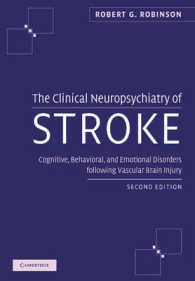- ホーム
- > 洋書
- > 英文書
- > Politics / International Relations
基本説明
New in paperback. Hardcover was published in 1999.
Full Description
Why do some state-building efforts succeed when others fail? Using formerly unavailable archival sources, this book presents an explanation for the rise and subsequent collapse of the Soviet state. The study explains how personal networks and elite identity served as informal sources of power that influenced state strength. Reconstructing the State also offers alternative interpretations of how the weak Bolshevik state extended its reach to a vast rural and multi-ethnic periphery as well as the dynamics of the center-regional conflict in the 1930s that culminated in the Great Terror.
Contents
Preface; 1. Introduction: explaining state-building outcomes and the Soviet Russian case; Part I. Structure and Identity in the Post-Revolutionary State Elite: 2. Anatomy of a regional elite: the rise of the provincial Komitetchiki; 3. Constructing an elite identity: images of self, service and state; Part II. Informal Sources of Power in the Post-Revolutionary State: 4. Extending the reach of the state: personal networks and territorial administration; 5. The constraints of power: personal networks and central rulership; Part III. Intrastate Conflict and the Constraints of Power Redefined: 6. Center and regions in conflict I: collectivization and the crisis of regional leadership; 7. Center and regions in conflict II: the fall of the provincial Komitetchiki; 8. Conclusion: state building and the Soviet Russian case reconsidered; Notes; Bibliography; Index.








